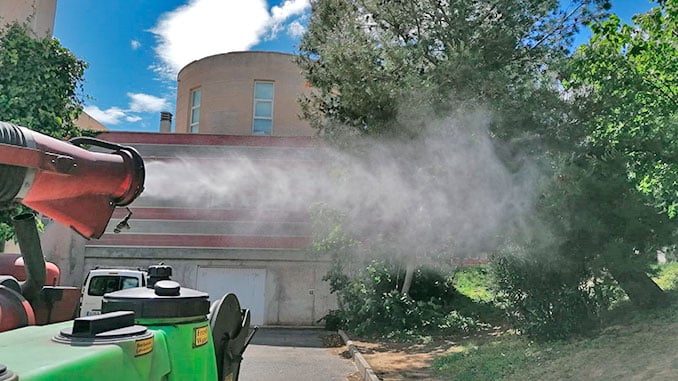The mosquito is part of the environment of the municipality of Torrevieja. It will never be eradicated. It lived in the salt marshes many centuries before the arrival of holiday townhouses, and it will still be there many years after most have them have gone.
However, the municipality can prevent mosquito infestations from getting out of control after episodes of torrential rain that are followed by high temperatures.
The Council has now identified the ten areas with the highest risk of mosquito outbreaks based on years of experience in the battle against the insect.
The identification is designed to be especially relevant to the awarding of the new pest control contract, which is costing almost half of the million euros over the next five years.
TORREVIEJA LAGOON
The irrigation areas located are in the flooded expanses between the CV-905 and the shores of the pink lagoon, which include the urbanisations (and their green areas) of El Limonar, Punta de la Víbora and the different phases of Las Torretas; or the flooded areas located between the N-332 and the shore of the Torrevieja lagoon. Also included are the areas where rainwater can accumulate between the CV-95 and the Torrevieja lagoon, including the Lago Jardín, Villa Sol and Los Balcones urbanisations.
Likewise, the area configured by the salt canal between the N-332 and Avda Gregorio Marañón Avenue, with Estación park and the Rincón del Salinero Park.
The same occurs with the areas around the Doña Sinforosa, Islas Canarias, San Roque and Rincón de Asturias parks. Finally, the drains around the La Libertad and Vistalegre promenades, where the main stormwater collection infrastructures of the urban area converge, are noted as being especially problematic areas.
HEALTH CENTRES
Outside of this top 10, but still included in the preferential treatment areas, are the cemeteries of Torrevieja and La Mata, and for health reasons the Hospital of Torrevieja, located next to the lagoon, as well as the Acequión health centres, La Loma, San Luis, La Mata, and Patricio Pérez.
Torrential rains and biological methods
The new contract incorporates two important conditions, in addition to special attention to the impact of pesticides in the natural park, when there is rainfall of more than 20 Liters per square metre, the winning company must establish widespread campaigns.
And in addition, the company must incorporate a project to promote biodiversity in comprehensive pest treatment, prioritising the recovery of those species that fundamentally feed on mosquitoes: bats, the main allies of human populations in this battle.
SPECIAL SENSITIVITY IN THE NATURAL PARK
The Council also dedicates a large section of the specifications of the new treatment contract to explaining the measures that must be adopted when spraying in the Lagunas Natural Park.
It states that the area is characterised by the great diversity of fauna, flora and ecological processes of enormous environmental interest, and is designated a Place of Community Interest and Area of Special Protection for Birds from the Natura 2000 network of the European Union.
It admits, however, that due to its close relationship with the town centre, particularly in the different urbanisations that surround it, it is necessary to control any mosquito outbreaks. This must be done using under environmental criteria that allow the impacts to be minimized, maximizing the well-being of the residents who live nearby.
The service company must be especially cautious with those areas of environmental interest included in the scope of the Natural Resources Management Plan of the protected area, such as the ponds of the Torrevieja irrigation channel, and process authorisations before the Department of the Environment.
Exceptionally, if it is necessary to spray during bird nesting season, the management of the Natural Park must be informed, and the guidelines established will be mandatory.



















